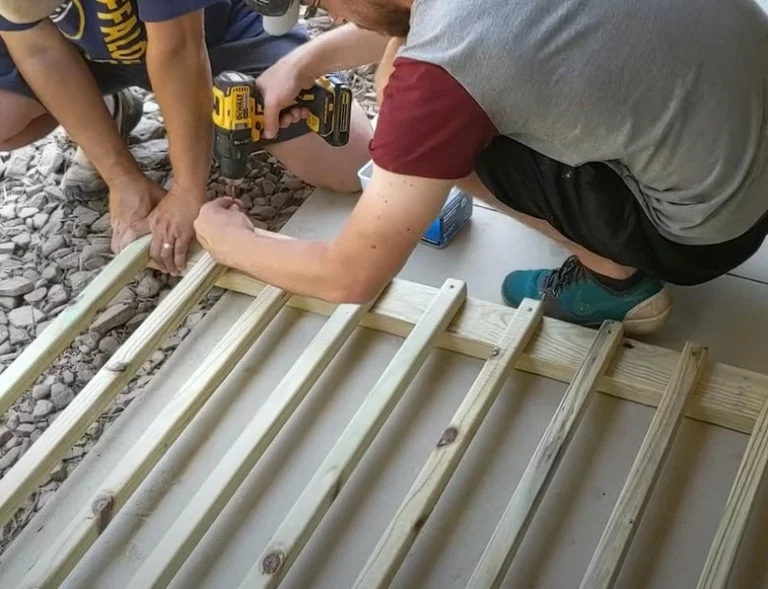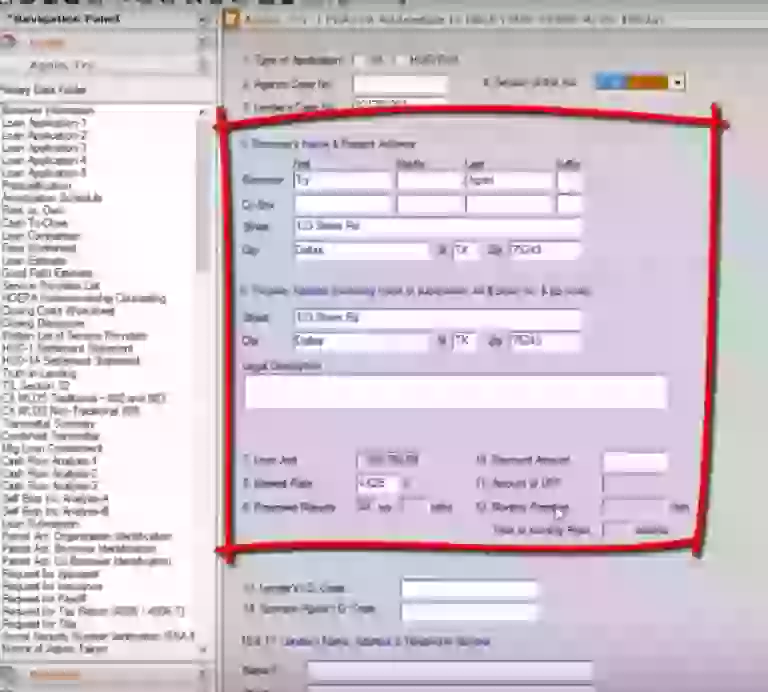What Is An HOA Loan?
HOA Loans
I want to briefly explain what are HOA loans because in our study about the FHA loan requirements, some readers were exchanging comments about an HOA loan in their respective condos and these are concepts that are completely different. Maybe I was not clear enough there.
An HOA loan is a type of loan that is obtained by a homeowners association (HOA) to fund repairs, maintenance, or other improvements to the common areas and amenities within the community.
The common areas and amenities may include things like swimming pools, clubhouses, playgrounds, landscaping, and parking lots, among others. These areas are maintained and managed by the HOA, and the costs associated with their upkeep are typically paid for through fees collected from the homeowners.
These fees are collected on a monthly basis, in my experience.
If the HOA needs to undertake a major repair or improvement project that requires more funds than are available through the fees collected from homeowners, they may seek out an HOA loan.
These loans are typically secured by the HOA’s assets, such as the common areas and amenities, and may have a fixed or variable interest rate and a repayment term ranging from a few years to several decades.
Who Is The Lender In An HOA Loan?
The lender in an HOA loan can be a traditional financial institution, such as a bank or credit union, or a specialized lender that focuses specifically on lending to homeowners associations.
In many cases, investors who are FHA lenders can also be HOA lenders. However in practice, what I have seen, is that an HOA lender is specialized in community associations or condo associations and knows how to underwrite and secure better these operations. They know that HOAs are legal persons of a different type and should be treated differently.
Regardless of the type of lender, the loan will typically be secured by the HOA’s assets, such as the common areas and amenities, and the lender may require certain financial disclosures or other documentation before approving the loan. The terms and conditions of the loan, including the interest rate and repayment schedule, will also be negotiated between the HOA and the lender.
Who Is The Borrower In An HOA Loan?
In an HOA loan, the borrower is the homeowners association (HOA) itself, not the individual homeowners.
The HOA is responsible for managing and maintaining the common areas and amenities within the community, and it is the entity that is authorized to enter into contracts, including loans, on behalf of the association.
While individual homeowners may benefit from the repairs, maintenance, or improvements that are funded by the loan, they are not typically responsible for repaying the loan directly. Instead, the costs associated with the loan may be passed on to homeowners through increased HOA fees or assessments.
What Is An HOA?
A homeowners association (HOA) is an organization that is established to manage and maintain a residential community or condominium complex. An HOA is typically formed by the developer of the community when the first homes or units are constructed, and membership in the HOA is mandatory for all property owners within the community.
The HOA is a legal entity that is authorized to act on behalf of the community and its members. It is governed by a board of directors, which is typically composed of volunteers who are elected by the members of the association. The board is responsible for making decisions related to the management and operation of the community, including enforcing the rules and regulations, maintaining common areas and amenities, and collecting fees and assessments from the members.
The rules and regulations of the HOA, which are often referred to as covenants, conditions, and restrictions (CC&Rs), are designed to maintain a certain standard of appearance and behavior within the community. These rules may cover things like architectural guidelines, landscaping requirements, and noise restrictions, among others.
Membership in an HOA is typically mandatory for all property owners within the community, and failure to comply with the rules and regulations can result in fines or other penalties. The fees and assessments collected by the HOA are used to fund the maintenance and operation of the community, as well as to pay for unexpected expenses or reserve funds for future repairs and improvements.
An apartment building can be organized as a homeowners association (HOA) that groups the owners of each individual apartment. In this type of arrangement, the HOA is responsible for maintaining the common areas and amenities of the building, such as the lobby, elevators, hallways, and any other shared spaces.
The HOA may also be responsible for enforcing rules and regulations related to things like noise levels, pets, and other behaviors that may impact the quality of life of other residents within the building. Additionally, the HOA may collect fees and assessments from the individual apartment owners in order to fund the maintenance and operation of the building.
HOA Loan Requirements
If a homeowners association (HOA) wants to obtain a loan, there are several requirements that the HOA may need to meet in order to be eligible for financing. These requirements can vary depending on the lender, but some common requirements for HOA loans include:
- Good financial standing: The HOA must demonstrate that it is in good financial standing and has the ability to repay the loan. This may involve providing financial statements, bank statements, or other documentation to the lender.
- Adequate collateral: The lender may require that the loan be secured by collateral, such as the common areas and amenities within the community. The value of the collateral must be sufficient to cover the loan amount.
- HOA approval: The loan must be approved by the board of directors or other governing body of the HOA. This may involve a vote or other approval process.
- Clear title: The HOA must have clear title to the collateral that is being used to secure the loan. This means that there are no liens or other encumbrances on the property that would prevent the lender from taking possession of the collateral in the event of default.
- Proper documentation: The HOA must provide all necessary documentation related to the loan, including loan applications, promissory notes, security agreements, and any other agreements or disclosures required by the lender.
- Meeting state and local regulations: The HOA must comply with any applicable state or local regulations related to obtaining a loan. This may involve obtaining approvals or permits from regulatory agencies or complying with certain disclosure requirements.
These are some common requirements for HOA loans, but the specifics may vary depending on the lender and the individual circumstances of the HOA. It’s important for the HOA to carefully review and understand the terms and conditions of any loan agreement before signing on the dotted line.
Differences Between FHA Loans And HOA Loans
A HOA loan is totally different from an FHA loan. Here is a table outlining some of the key differences between an FHA loan and an HOA loan:
| Aspect | FHA Loan | HOA Loan |
|---|---|---|
| Type of borrower | Physical person (homeowner) | Legal entity (homeowners association) |
| Purpose | Financing for purchasing a home | Financing for maintenance and operations |
| Collateral | Home being purchased | Association’s common areas and assessments |
| Approval process | Lender underwrites borrower’s credit | Lender reviews association’s financials |
| Requirements | Minimum credit score of 500 | Financially stable HOA with regular assessments |
| Example | John applies for an FHA loan to buy a house | Acme HOA takes out a loan to repair community pool |
It’s important to note that FHA loans and HOA loans serve different purposes and have different requirements. FHA loans are designed to help individuals purchase a home, while HOA loans are obtained by the association to finance maintenance and operations. The approval process for an FHA loan focuses on the creditworthiness of the borrower, while an HOA loan approval is based on the financial stability of the association.
Additionally, the collateral for an FHA loan is the home being purchased, while the collateral for an HOA loan is the association’s common areas and assessments. In the event that the association defaults on the loan, the lender may have the right to place a lien on the common areas and assessments of the community.
Overall, both FHA loans and HOA loans can be valuable tools for homeowners and associations respectively, but they serve different purposes and have different requirements.
Line Of Credit For A Condo Association
A line of credit for a condo association is similar to an HOA loan in that it is a form of financing that is obtained by the association to cover expenses related to the maintenance and operation of the property. However, there are some key differences between the two.
A line of credit is a type of revolving credit that allows the association to borrow funds as needed, up to a pre-approved limit. This can be useful for covering unexpected expenses or for managing cash flow during periods of uneven revenue or expenses.
The requirements for obtaining a line of credit for a condo association may be similar to those for an HOA loan, but there are some differences. For example, because a line of credit is revolving credit, the lender may require more frequent financial reporting to ensure that the association remains in good financial standing and is able to repay the amounts borrowed.
Additionally, the terms and conditions of a line of credit may be more flexible than those of an HOA loan, as the association can borrow and repay funds as needed, rather than taking out a fixed amount of financing at the outset. However, this flexibility may come with higher interest rates or fees, as the lender is assuming more risk by extending credit that can be drawn upon at any time.
Overall, both HOA loans and lines of credit for condo associations can be useful tools for managing the financial needs of the association and ensuring that the property is maintained in good condition. The specific choice between the two will depend on the individual needs and circumstances of the association.
Differences Between A HOA and a Condominium Association
A homeowners association (HOA) and a condominium association (Condo Association) are both forms of community associations that are responsible for managing and maintaining common areas and amenities within a residential community.
However, there are some key differences between the two:
- Ownership: The most significant difference between an HOA and a Condo Association is the type of property ownership that they govern. HOAs typically govern single-family homes or townhouses, while Condo Associations govern individual units within a larger building or complex.
- Governing documents: Both types of associations are governed by a set of bylaws or other governing documents that outline the rules and regulations that residents must follow. However, these documents may differ in their specifics depending on the type of community being governed.
- Voting rights: In an HOA, each homeowner typically has one vote in decisions related to the association, regardless of the size or value of their home. In a Condo Association, however, the number of votes that a resident has may be based on the size or value of their unit.
- Maintenance responsibilities: In an HOA, individual homeowners are typically responsible for maintaining their own homes and yards, while the association is responsible for maintaining common areas such as parks, playgrounds, and community centers. In a Condo Association, the association is typically responsible for maintaining both the common areas and the individual units.
- Fees: Both types of associations may charge fees or assessments to cover the cost of maintaining common areas and amenities. However, the fees charged by a Condo Association may be higher than those charged by an HOA, as the association is responsible for maintaining a larger portion of the property.
Community Association Loans
Community association loans are similar to HOA loans in that they are also used to finance the maintenance and improvement of common areas in a residential community. The term “community association” is an umbrella term that encompasses both homeowners associations (HOAs) and condominium associations.
Like HOA loans, community association loans are obtained by the association as a legal entity rather than by individual homeowners, and the lender typically reviews the association’s financials and reserves before approving the loan. The loan may be secured by the association’s assets, such as common areas or assessments, and the repayment may be spread out over several years.
Overall, the purpose and basic structure of community association loans are similar to those of HOA loans, but there may be some differences in the specific requirements and terms depending on the type of community being financed.
here is a table outlining some of the key differences between community association loans and HOA loans:
| Aspect | HOA Loan | Community Association Loan |
|---|---|---|
| Type of borrower | Legal entity (homeowners association) | Legal entity (homeowners association or condominium association) |
| Purpose | Financing for maintenance and operations | Financing for maintenance and operations |
| Collateral | Association’s common areas and assessments | Association’s common areas and assessments |
| Approval process | Lender reviews association’s financials | Lender reviews association’s financials and reserves |
| Requirements | Financially stable HOA with regular assessments | Financially stable association with regular assessments |
| Example | Acme HOA takes out a loan to repair community pool | Maplewood Condo Association takes out a loan to replace roof |
Both community association loans and HOA loans are used to finance maintenance and improvement of common areas in a residential community, and both are obtained by the association as a legal entity rather than by individual homeowners.
The main difference between the two types of loans is that community association loans may be obtained by either homeowners associations or condominium associations, while HOA loans are only obtained by homeowners associations. Additionally, the approval process for a community association loan may involve a more detailed review of the association’s financials and reserves than for an HOA loan.
Overall, while there may be some differences in the specific requirements and terms for community association loans versus HOA loans, the basic purpose and structure of the loans are similar.
HOA Bank And Their Position As Lenders
A HOA bank is a financial institution that specializes in providing financial products and services to homeowners associations (HOAs) and other community associations. These banks may offer a range of products such as loans, lines of credit, deposit accounts, and other banking services specifically tailored to the needs of HOAs and their members.
HOA banks may also offer services such as online banking and bill payment, as well as tools to help HOAs manage their finances, track payments, and monitor their account activity. These banks may be local or national, and may be either traditional banks or credit unions.
It’s worth noting that while some banks may specialize in serving HOAs, most traditional banks also offer HOA loans and other services as part of their commercial lending and banking operations.
This concept is somewhat similar to the FHA lenders already discussed. HOA banks may also offer lines of credit, deposit accounts, and other banking services tailored to the needs of HOAs and their members. They are experienced in working with HOAs and understand the unique financial needs and challenges that they face. As a result, they may be better equipped to offer customized solutions that meet the needs of individual HOAs.
HOA Loan Calculator
To calculate an HOA loan or any other loan, you will typically need to know the total amount needed, the interest rate or APR, and the repayment term. However, there may be other parameters that are specific to HOA loans that you should consider as well. Some of these parameters include:
- Loan Purpose: HOA loans may be used for a variety of purposes, such as funding repairs, renovations, or other capital projects. The specific purpose of the loan may impact the loan terms, interest rates, and repayment periods.
- Loan Term: HOA loans may have different repayment periods depending on the amount borrowed and the loan purpose. For example, a loan for a major renovation project may have a longer repayment term than a loan for routine maintenance.
- Interest Rate: The interest rate on an HOA loan may be fixed or variable, and it may be impacted by the creditworthiness of the association and other factors.
- Fees: There may be fees associated with obtaining an HOA loan, such as origination fees, application fees, or other charges. These fees may be rolled into the loan or paid separately.
- Collateral: The collateral for an HOA loan may vary depending on the lender and the loan purpose. For example, the lender may require a lien on the association’s common areas, or may require assessments to be pledged as collateral.

I am David, economist, originally from Britain, and studied in Germany and Canada. I am now living in the United States. I have a house in Ontario, but I actually never go. I wrote some books about sovereign debt, and mortgage loans. I am currently retired and dedicate most of my time to fishing. There were many topics in personal finances that have currently changed and other that I have never published before. So now in Business Finance, I found the opportunity to do so. Please let me know in the comments section which are your thoughts. Thank you and have a happy reading.



